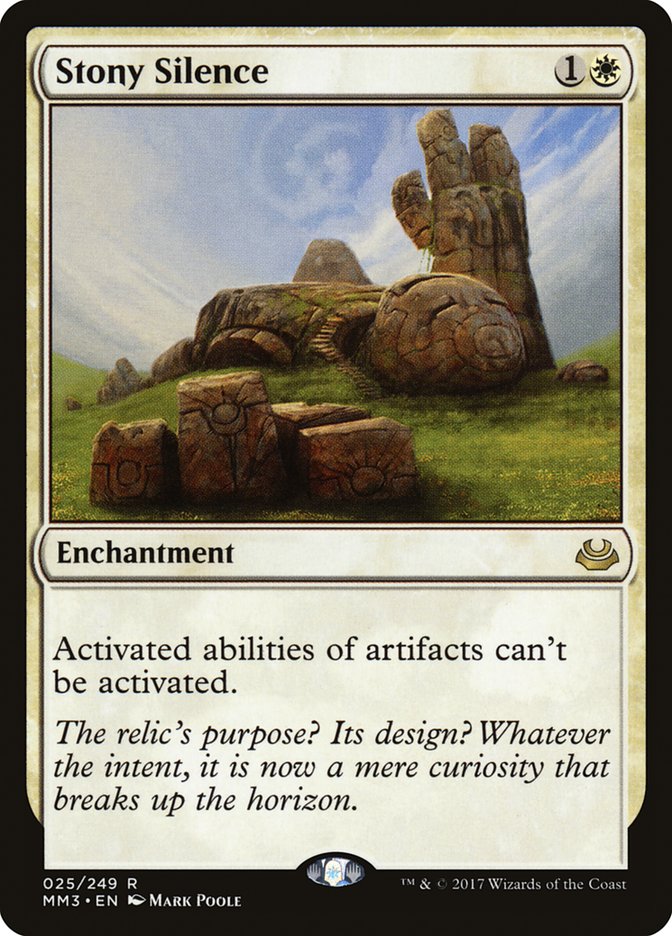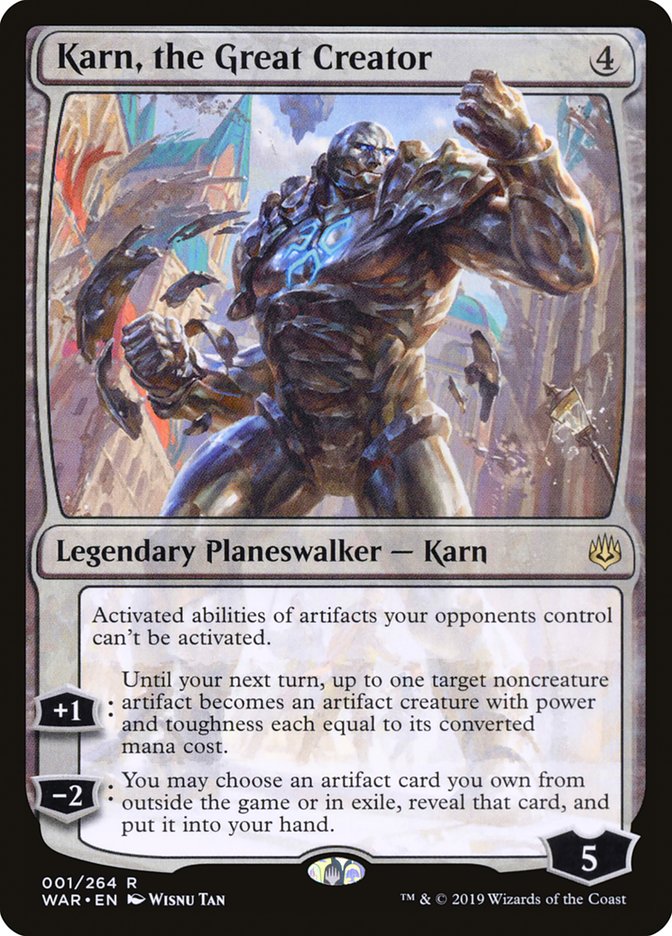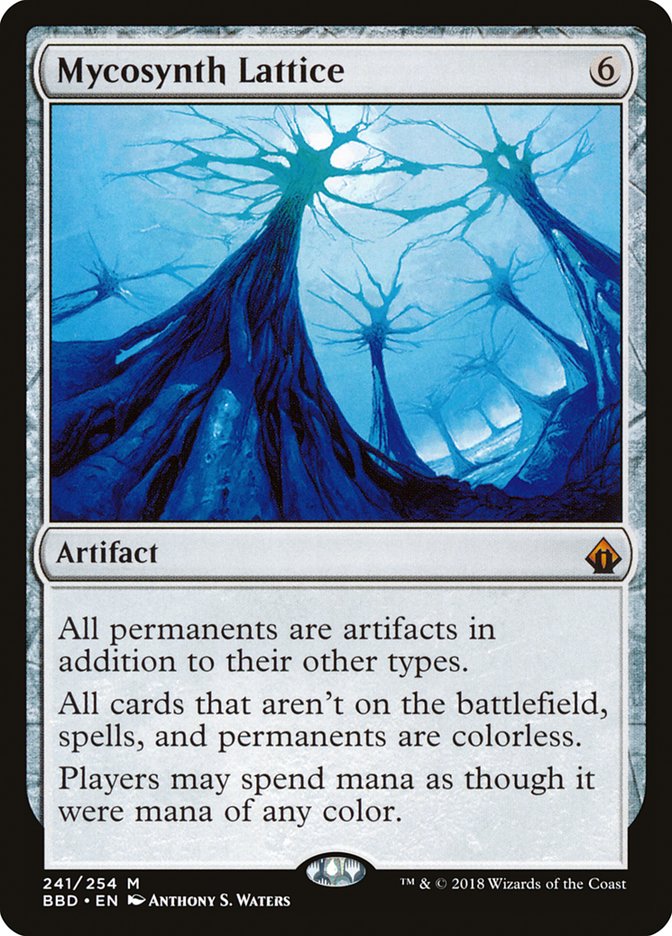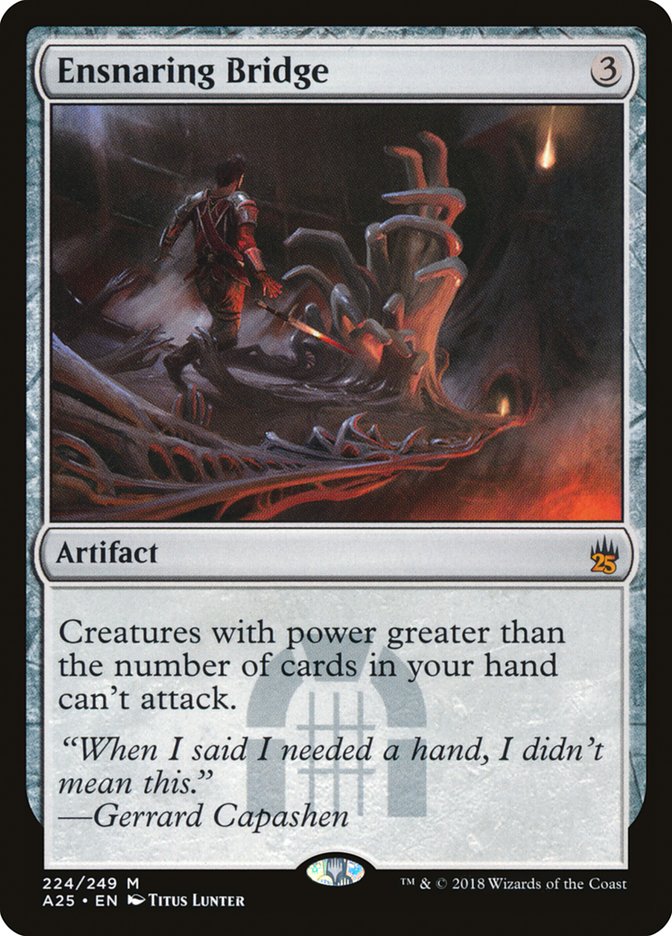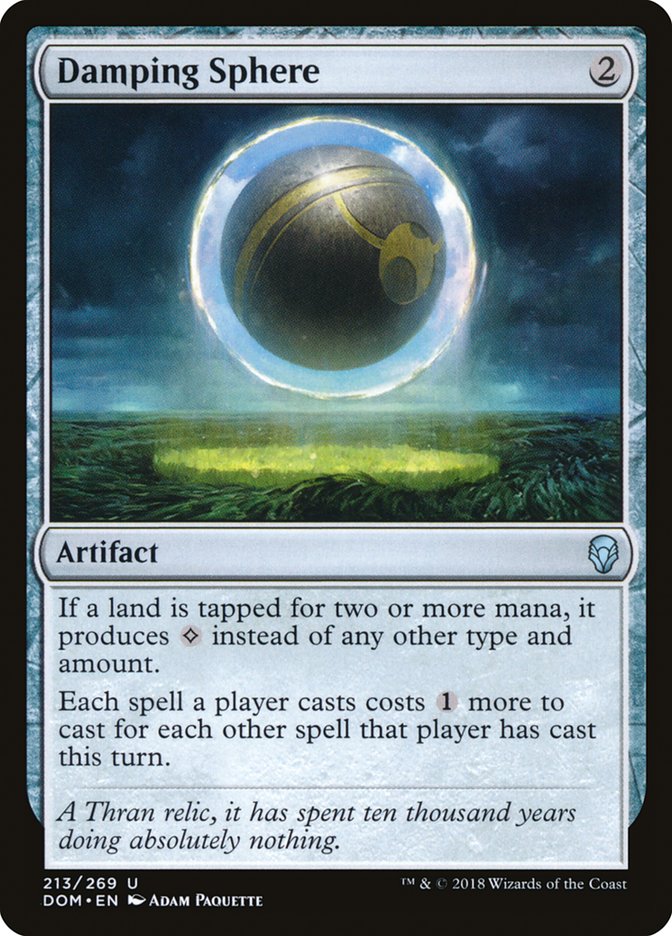Since time immemorial white has been known as the color of sideboard cards in the Modern format. While a variety of strong white sideboard cards exist, its impressive reputation in Games 2 and 3 rests primarily on two specific cards:
Few cards can match the combination of all-purpose utility and raw power that Rest in Peace brings to the table, but Leyline of the Void, Surgical Extraction, and Relic of Progenitus each provide graveyard hate that is in the same tier as the white enchantment. Any of those four could be better or worse, depending on your specific deck and the metagame as a whole. The other three can also be played in decks of any color, meaning that while white has historically had an advantage in the category of graveyard hate, it’s a small one. But no nonwhite color has been able to compete with Stony Silence.
Stony Silence is cheap and brutally effective, shutting off Expedition Maps, Cranial Platings, Codex Shredders, and Lotus Blooms, all for the low price of two mana. As a result, its artifact hate is the single biggest reason for white’s historical sideboard dominance. But that is all about to change. Enter Karn, the Great Creator.
Karn provides powerful artifact hate to any color. His mana cost is substantially higher than Stony Silence, and in a format as fast as Modern, that makes a huge difference. But I think Karn has enough advantages that he will still be a major player in Modern going forward.
First, Karn’s static ability is asymmetric. This means that if you’re playing Affinity, Hardened Scales or Lantern Control, but also wish to hate on those decks, you can do so without hindering your own gameplan.
Second, there’s the animation ability. While this is undoubtedly the weakest part of the card, it allows Karn’s controller to reliably deal with opposing artifacts by animating them and then using creature removal like Lightning Bolt or Fatal Push to send them packing. Animating an opposing Equipment will cause it to fall off, and, due to Karn’s static ability, your opponent will be unable to re-equip it. In combination with Bottled Cloister, this ability can also let a Whir Prison player answer problematic planeswalkers through the combat step.
Then there’s the show-stopper, the powerhouse that is Karn’s Wish ability. For the bargain-basement price of two loyalty, Karn will let you access any hateful artifact in your sideboard. While there’s some chance this makes Karn a fringe player in Standard, I am skeptical that finding Sorcerous Spyglass is a Tier 1 strategy. But in Modern, there are more powerful artifact hate cards that can defeat entire strategies singlehandedly: think Damping Sphere for Mono-Green Tron or Torpor Orb for Humans. Karn allows you to grab these cards in Game 1 before the opponent sideboards in answers to hate cards. Whir Prison already plays a variety of strange artifacts across its maindeck and sideboard, so if nothing else, I expect to see Karn in Whir’s maindeck in small numbers. But the potential for this card goes substantially beyond that.
Karn, the One-Card Combo
One of the reasons Karn’s static ability is so strong is that, much like Stony Silence before it, it stops mana abilities. On its own, this hampers the ability of Mox Opal / Darksteel Citadel decks to cast anything under the Great Creator’s watchful eye. However, it also has some interesting implications with Mycosynth Lattice.
Mycosynth Lattice turns all of the opposing lands into artifacts, rendering them inert while Karn is on the battlefield. In other words, this prevents your opponent from casting any spells for the rest of the game. Because Lattice is a six-mana card that is utterly blank on its own, this combo would normally have no shot of seeing competitive play. But Karn’s Wish ability changes the equation. It gives you access to the combo without any risk of drawing a six-mana paperweight. In addition, it means that you have no need for card selection to help with assembly. Any time you untap with Karn and six mana sources, you will have the ability to prevent your opponent from ever casting another spell.
The deck I think this is most relevant in is, once again, Whir Prison. Historically, this deck has gone to absurd lengths to beat hate cards, most notably Shatterstorm. Jester’s Cap, Unmoored Ego, and even Darksteel Forge have been used as a means of preventing hate from dismantling the lock. With Karn plus Lattice, the days of that nonsense are over. Karn helps assemble the basic lock and then slams the door shut before the opponent can find answers.
Let me emphasize here – this is not the second coming of Splinter Twin. Karn plus Lattice still requires you to deal with whatever your opponent has on the battlefield. After all, if you’re dead on the battlefield, you’re not going to win, regardless of whether they can cast spells or not. Additionally, Turn 6 is a world of difference from Turn 4; the clock this combo provides is not going to race any playable Modern deck.
That said, I think the presence of this interaction could allow Karn to see more widespread play than it otherwise would. The cost of a single sideboard slot is low enough that I think almost any deck that plays Karn somewhere in the 75 is going to want a Lattice in the sideboard. Even in Modern, games sometimes go long and the ability to just end things from an even-ish position is not to be underestimated.
Let Sideboard Karns Be Sideboard Cards
I think it is highly probable that Karn will see play in Modern sideboards. A one-sided colorless Stony Silence effect is too unique and powerful to pass up. As I alluded to earlier, I also think Karn will find a home in Whir Prison. Four mana is a lot for an Ensnaring Bridge deck, but Karn provides enough utility to justify it, at least in small numbers.
Unfortunately, I am pessimistic about Karn’s ability to make it into any other maindecks. If the metagame became warped in such a way that maindecking Stony Silence was a consideration, then Karn’s dramatically increased utility might cause him to get the nod. But that has not happened in the history of the format and I see no indication that is going to change anytime soon.
Modern is an incredibly unforgiving format, and while accessing your sideboard in Game 1 is great, playing a card with no impact on the battlefield until Turn 5 is not acceptable the vast majority of the time. Damping Sphere is amazing against Mono-Green Tron on Turn 2, but it isn’t going to save you if your opponent has already resolved a massive threat.
Card Type Matters
One important difference between Karn, the Great Creator and Stony Silence is the type line. Being a planeswalker leaves Karn vulnerable to attack, which makes him substantially weaker against Affinity. On the other hand, Karn starts with enough loyalty that most non-Affinity artifact decks will not be able to take him down very easily. Note that the creatures in Hardened Scales are usually pretty weak and Lantern Control is basically creatureless. Additionally, being a planeswalker makes Karn immune to Nature’s Claim, which both Hardened Scales and Lantern Control commonly sideboard in. Karn’s higher mana cost makes him slightly worse against Assassin’s Trophy, but both get Trophied nonetheless. On the whole, I think being a high-loyalty planeswalker with a static ability is at least as good as being an enchantment in the current Modern landscape.
The Effects of Karn on Modern
Let us now make the generous assumption that my predictions about Karn are correct. If Karn starts seeing substantial play in sideboards and Whir Prison, what would change in the format as a whole?
The biggest difference that Karn will make is reducing the ability of very small numbers of high-impact sideboard cards to beat Whir Prison. Current builds of Whir Prison give opponents a ton of time to find their difficult-to-disrupt answers, even if they lock out most avenues of attack. Without that time, one would need a higher density of anti-Whir cards in order to break out of the lock before Karn plus Lattice shows up. Additionally, Karn’s ability to grab cards from Exile means that Phoenix’s Plan B of mise-ing an Ensnaring Bridge off a Thought Scour and casting Surgical Extraction becomes much less relevant.
As a result, I would expect a small resurgence in Whir Prison’s numbers and some forced adaptation on the part of decks like Izzet Phoenix and Amulet Titan that lean on these high-impact effects. This additional pressure on sideboards will make decks that are not vulnerable to anti-Whir Prison cards, Mono-Green Tron and Humans for example, slightly better.
Karn, the Great Creator
That’s my initial assessment of Karn, one of the hardest-to-evaluate cards in War of the Spark. It will revitalize a dying archetype and find an assortment of sideboard homes throughout the Modern landscape. But there’s a decent chance I’m missing the potential for some crazy brew or wild new combo deck. After all, they don’t call him the Great Creator for nothing.



